 Maria-Elena Giner, commissioner for the International Boundary and Water Commission, speaks during a meeting to address Rio Grande Valley water concerns amid a drought at the Texas A&M Agrilife Research and Extension Center, on Wednesday, July 27, 2022, in Weslaco. (Joel Martinez | jmartinez@themonitor.com)
Maria-Elena Giner, commissioner for the International Boundary and Water Commission, speaks during a meeting to address Rio Grande Valley water concerns amid a drought at the Texas A&M Agrilife Research and Extension Center, on Wednesday, July 27, 2022, in Weslaco. (Joel Martinez | jmartinez@themonitor.com)Nearly a year after American diplomats were left at the table waiting to sign an update to a 70-year-old binational water sharing treaty with Mexico, that agreement has now been signed.
Maria Elena Giner, commissioner of the U.S. International Boundary and Water Commission, or IBWC, announced the signing of the agreement in a news release Saturday.
Known as “Minute 331,” the new agreement between the two countries is meant to increase reliability and predictability to the water deliveries that Mexico owes the U.S. under the terms of the 1944 treaty.
It’s also meant to empower Mexico with additional tools to satisfy its treaty obligations during lean years when drought stresses the Rio Grande watershed.
“The last thirty years of managing over-stretched water resources in the Rio Grande basin have produced broad agreement that the status quo was not acceptable. With the signing of this Minute, Mexico has tools for more regular water deliveries that can be applied right away,” Giner stated in the news release.
But rather than signaling hope for local water users, including scores of farmers who have had to curtail production due to their inability to irrigate their fields, the minute signing has instead fueled continued distrust of Mexico.
“We were not supportive of the minute getting signed,” Sonny Hinojosa, water advocate and former general manager of Hidalgo County Irrigation District No. 2, said on Monday.
“I mean, here we are (in) the fourth year of a cycle. Mexico does not have the water to comply with the delivery requirements. So, what difference is next season gonna make? Really, nothing. This minute is late in the game,” he added.
The treaty stipulates that Mexico must deliver 1.75 million acre feet of water to the Rio Grande over the course of a five-year cycle.
The fifth year of the current cycle began just a few weeks ago, at the end of October, and Mexico is woefully, hopelessly behind.
As of Nov. 2, the country was more than 983,000 acre feet — or nearly three years — in arrears.
Mexico is supposed to deliver water to the Rio Grande from six tributaries there.
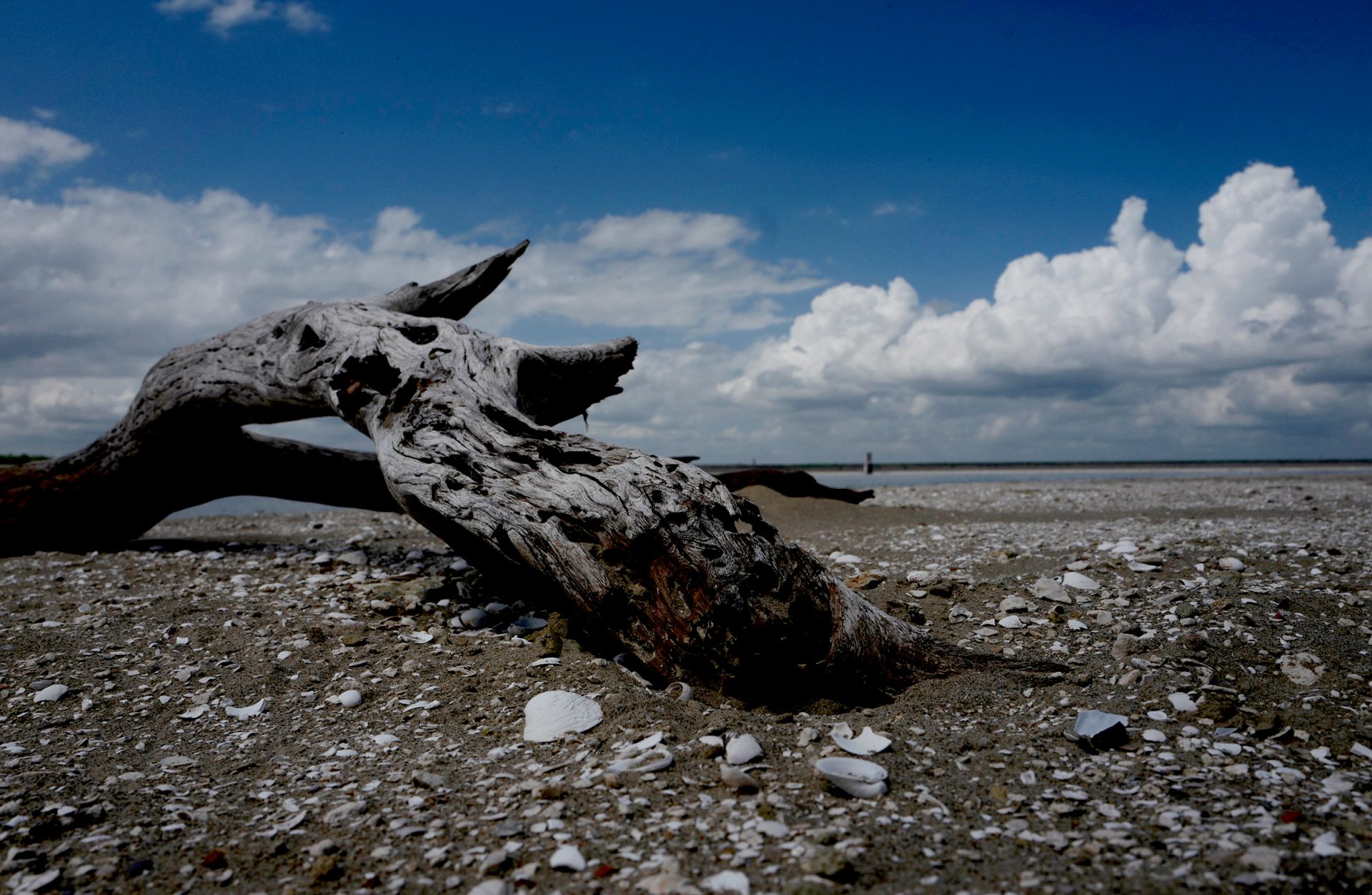 Falcon International Reservoir, commonly called Falcon Lake, is shown 40 miles southeast of Laredo on Wednesday, July 24, 2024. (Delcia Lopez | dlopez@themonitor.com)
Falcon International Reservoir, commonly called Falcon Lake, is shown 40 miles southeast of Laredo on Wednesday, July 24, 2024. (Delcia Lopez | dlopez@themonitor.com)Eight dams hold back the waters from those six Mexican rivers, and nearly all of them are at critically low levels, just like Falcon and Amistad international reservoirs, which straddle the Rio Grande and supply not just South Texas with water, but Mexico’s border states of Nuevo Leon and Tamaulipas as well.
Even if Mexico delivered every drop of water it’s storing in its inland reservoirs, it couldn’t hope to meet its treaty obligations by next October’s deadline.
Minute 331, which Commissioner Giner described as a “pilot minute” is meant to serve as a testing ground for potential solutions.
For instance, should Mexico end a five-year cycle in a deficit, the treaty has previously allowed Mexico to satisfy its obligations by transferring ownership of its water in Falcon and Amistad to the United States.
And on similarly rare occasion, it has allowed for Mexico to offer water to the U.S. from two rivers south of Falcon Dam — the Rio San Juan and the Rio Alamo.
But those options only became viable during a “second” cycle.
Minute 331 makes such options available in a “first” cycle — before Mexico has defaulted.
But for local farmers, it’s too little too late.
The unpredictability of Mexico’s water deliveries has already dealt a fatal blow to the Rio Grande Valley’s sugarcane industry, whose 51-year legacy here came to an end in February.
Many fear the citrus industry is next.
“You know, it really looks bleak at the moment. I mean, we’ve exhausted hurricane season, basically. We’re going into next spring lower than we’ve ever been,” Dale Murden, a Mission citrus grower and president of Texas Citrus Mutual, said Tuesday.
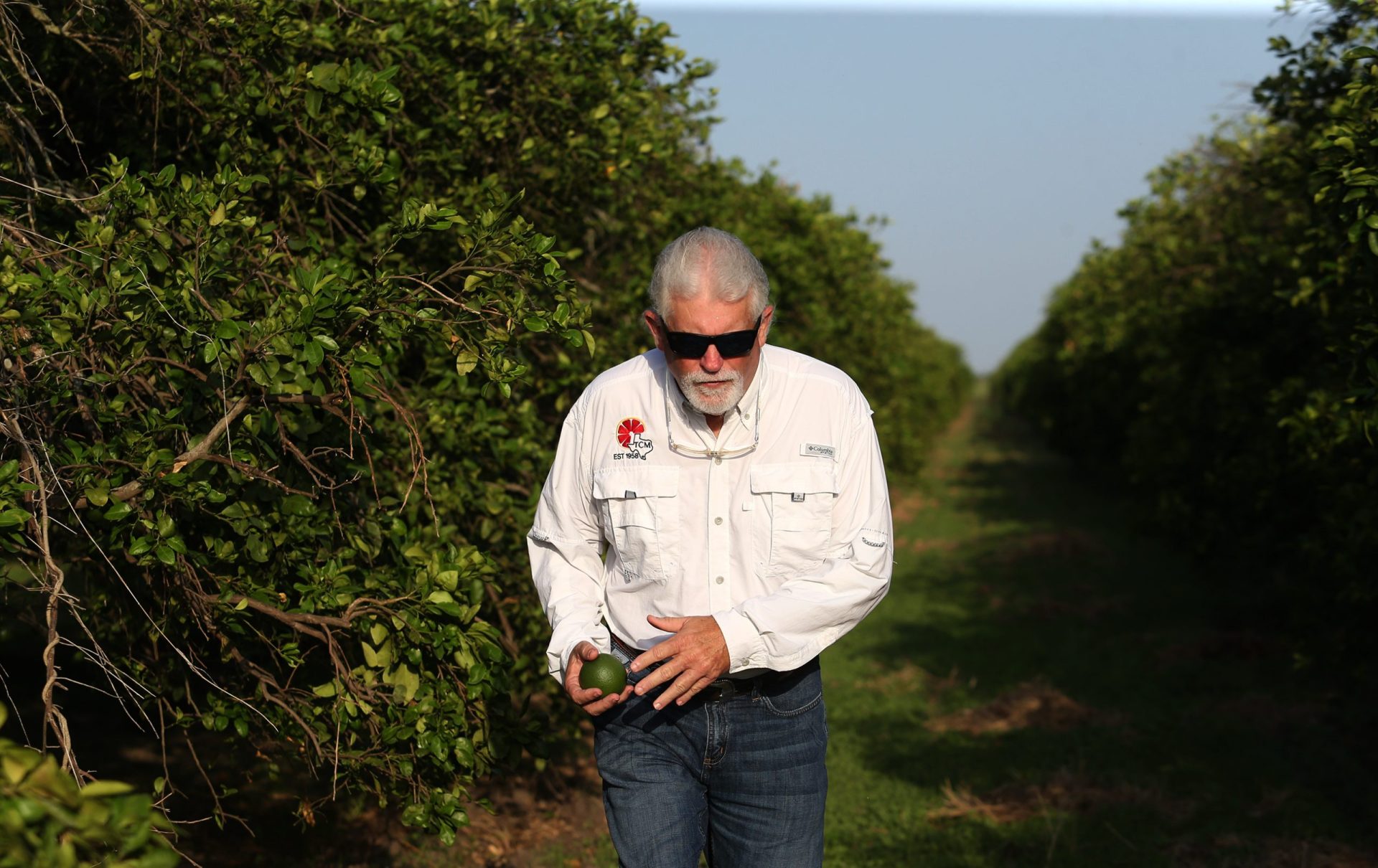 Dale Murden with Texas Citrus Mutual walks along some of his citrus groves Thursday, August 4, 2022, in Santa Rosa. (Delcia Lopez | dlopez@themonitor.com)
Dale Murden with Texas Citrus Mutual walks along some of his citrus groves Thursday, August 4, 2022, in Santa Rosa. (Delcia Lopez | dlopez@themonitor.com)“It’s gonna be a long, hot summer next year, potentially. A very long, hot, scary summer,” Murden said.
Murden said water scarcity has already caused the Valley’s citrus industry — which was once worth $468 million to the Texas economy “a couple of years ago” — to shrink by at least 50%.
Murden added he’s been too afraid to commission a more recent economic analysis because of how much the industry has shrunk.
Citrus growers like him have plowed under approximately 7,000 acres of orchards and have been dealt blow after blow, from freezes to drought to shrinking water accounts at the reservoirs.
Murden said he’s glad the IBWC was finally able to wrangle a minute signing out of Mexican diplomats, but worries it’s a victory achieved at excessive cost.
“Optimistically, I’m glad they’ve added tools and opportunities and options. The problem to me with those minutes are there’s never a penalty for blowing it off,” Murden said.
It’s a concern Hinojosa shared.
“Everything is always in their favor. These minutes, we’re always at a desperate point with our water supply that these proposals are being made. And the gamble is something is better than nothing. So, we’re always having to concede,” Hinojosa said.
“Once again, no leverage, no enforcement, no teeth,” he added.
In speaking about their concerns, both men were audibly working hard to temper their frustration — and their anger.
“People trust Mexicans. They trust Mexico. We don’t,” Hinojosa said, referring to the Valley’s water managers who have long had to deal firsthand with Mexico’s water delivery shortfalls.
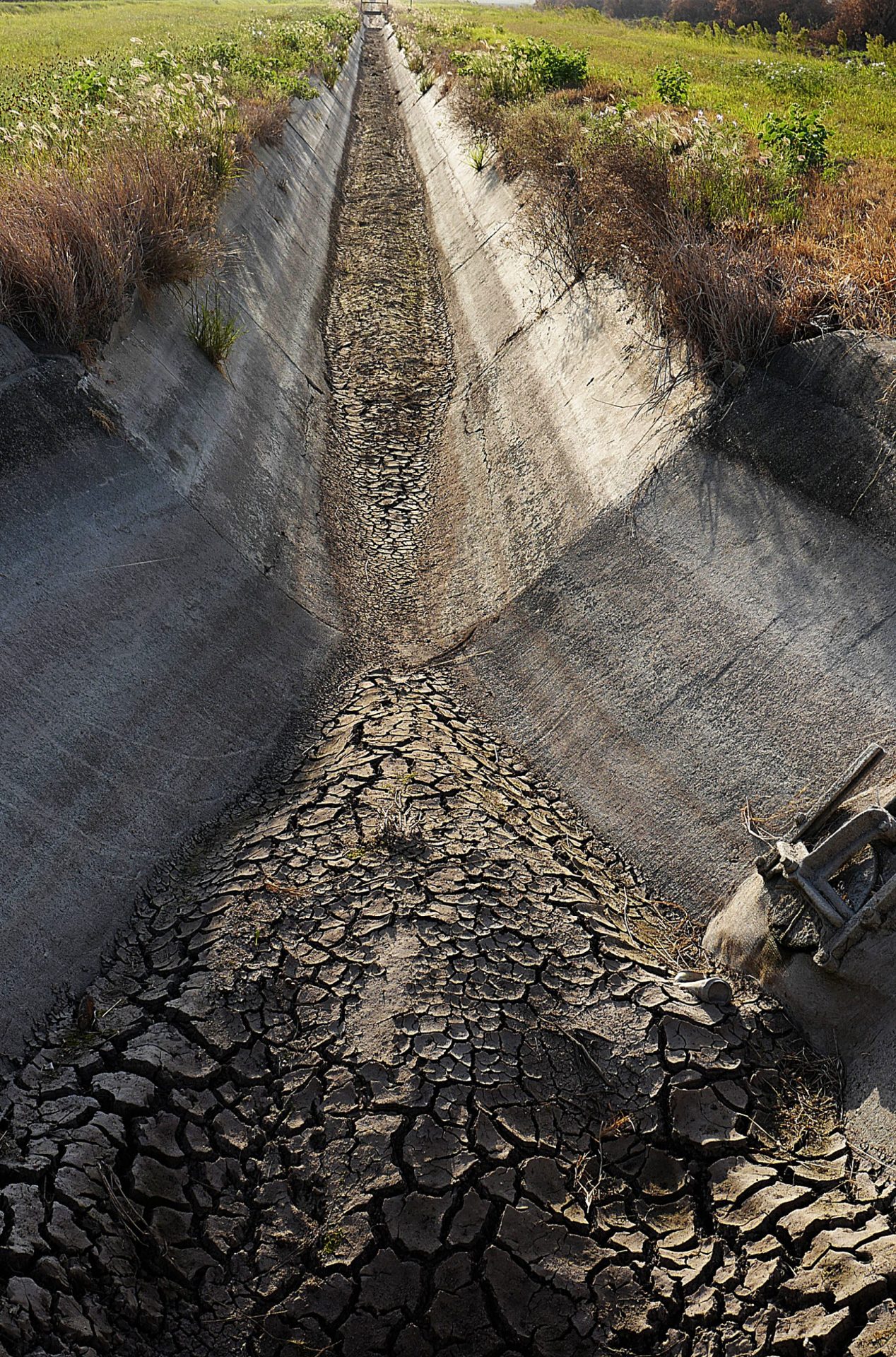 Cracked dry sediment is seen in an irrigation canal near Dale Murden’s orchards Thursday, August 4, 2022, in Santa Rosa. (Delcia Lopez | dlopez@themonitor.com)
Cracked dry sediment is seen in an irrigation canal near Dale Murden’s orchards Thursday, August 4, 2022, in Santa Rosa. (Delcia Lopez | dlopez@themonitor.com)“This is how ridiculous it’s getting. Sugar’s gone. Is citrus next? Can’t grow a tree without water. Can’t plan. Can’t plant. Can’t do anything,” Murden said.
“I’m just mad,” he said.
Another frustration Murden shared is that Minute 331 included no language about Mexico making a water delivery now.
Giner explained that’s because the minute is not meant to be “a short term remedy,” but instead, “This minute was meant to be something that was used over the next five years.”
Currently, Mexico has offered the U.S. some 125,000 acre feet of water from the Rio San Juan — overflow from a few summer rainstorms.
But the Rio San Juan outfalls into the Rio Grande south of Falcon Dam, meaning there’s no way for American water users to capture and store it.
Under the terms of the new minute, Mexico would now — for the first time — be given credit for that water.
But it’s just one-tenth the volume of water that Valley farmers need on an annual basis.
Further exacerbating the issue, Texas’ state water regulator, the Texas Commission on Environmental Quality, or TCEQ, has already told farmers that they’d be breaking the law if they try to use that water.
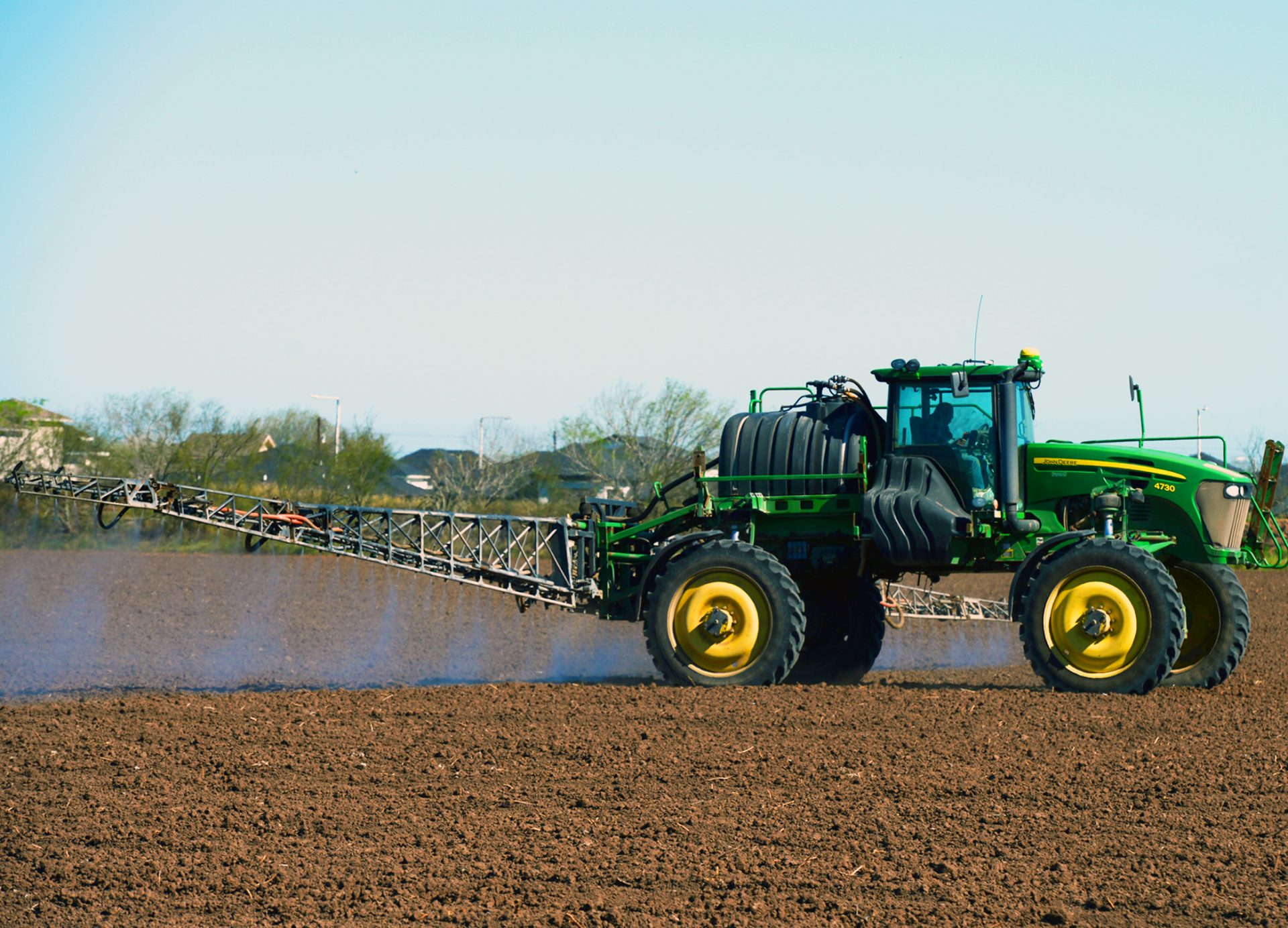 A farmer uses a John Deere self-propelled sprayer on his crop field in Brownsville. (Miguel Roberts/The Brownsville Herald)
A farmer uses a John Deere self-propelled sprayer on his crop field in Brownsville. (Miguel Roberts/The Brownsville Herald)That’s because the TCEQ, via the Texas watermaster, uses the waters stored at Amistad and Falcon to keep track of how much water a water rights user has consumed.
Any water they take from the river below the dams is water TCEQ can’t account for.
TCEQ officials told Hinojosa — who is a former watermaster himself — that software issues are preventing the agency from being able to account for Rio San Juan water.
“That is ridiculous,” Hinojosa said.
“That should be embarrassing that a state agency doesn’t have the ability to account for the water,” he added.
Meanwhile, the promise of water continues to be a mirage for farmers like Murden, who still have heart and hope for producing crops, despite all the environmental and diplomatic impediments.
“I’m trying to be as optimistic as I can. The crop looks good right now, the demand is very strong. The quality is good. You’re asking me about next year and I’m trying not to think about it,” Murden said with a wry and weary laugh.
The post Mistrust deepens as Mexico finally signs water treaty update appeared first on MyRGV.com.
 (2).png)
 1 day ago
16
1 day ago
16



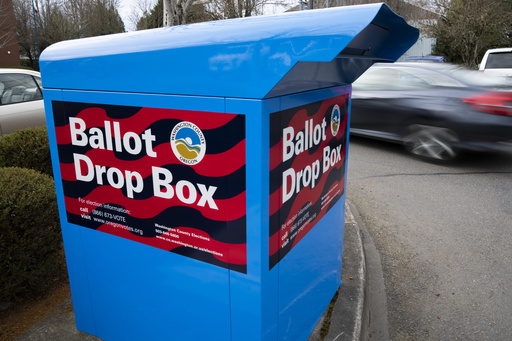




 English (US)
English (US)